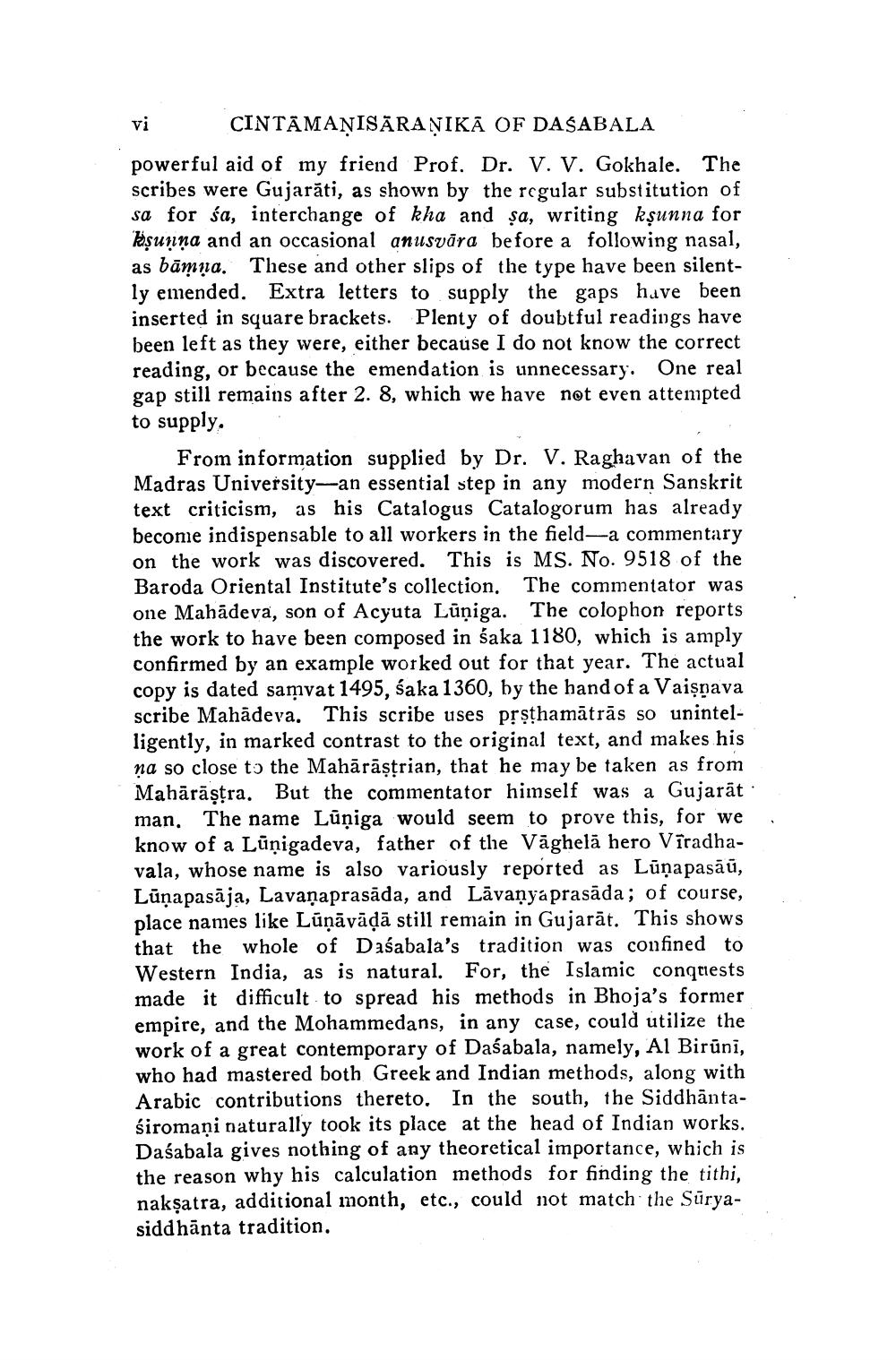Book Title: Cintamani Sarnika Of Dasabala Author(s): Dharmanand Kosambi Publisher: D D Kosambi View full book textPage 4
________________ CINTĀMAŅISĀRA ŅIKĀ OF DASABALA powerful aid of my friend Prof. Dr. V. V. Gokhale. The scribes were Gujarati, as shown by the regular substitution of sa for śa, interchange of kha and șa, writing kşunna for kşunna and an occasional anusvāra before a following nasal, as bāmņa. These and other slips of the type have been silently emended. Extra letters to supply the gaps have been inserted in square brackets. Plenty of doubtful readings have been left as they were, either because I do not know the correct reading, or because the emendation is unnecessary. One real gap still remains after 2. 8, which we have not even attempted to supply, From information supplied by Dr. V. Raghavan of the Madras University-an essential step in any modern Sanskrit text criticism, as his Catalogus Catalogorum has already become indispensable to all workers in the field-a commentary on the work was discovered. This is MS. No. 9518 of the Baroda Oriental Institute's collection. The commentator was one Mahādeva, son of Acyuta Lūņiga. The colophon reports the work to have been composed in saka 1180, which is amply confirmed by an example worked out for that year. The actual copy is dated samvat 1495, saka 1360, by the hand of a Vaişpava scribe Mahādeva. This scribe uses prşthamātrās so unintelligently, in marked contrast to the original text, and makes his na so close to the Mahārāştrian, that he may be taken as from Mahārāstra. But the commentator himself was a Gujarāt man. The name Lūņiga would seem to prove this, for we know of a Lūņigadeva, father of the Vāghelā hero Vīradhavala, whose name is also variously reported as Lūņa pasāū, Lūņapasāja, Lavaņaprasāda, and Lāvanyaprasāda; of course, place names like Lūnāvādā still remain in Gujarāt. This shows that the whole of Daśabala's tradition was confined to Western India, as is natural. For, the Islamic conquests made it difficult to spread his methods in Bhoja's former empire, and the Mohammedans, in any case, could utilize the work of a great contemporary of Daśabala, namely, Al Biruni, who had mastered both Greek and Indian methods, along with Arabic contributions thereto. In the south, the Siddhāntasiromaņi naturally took its place at the head of Indian works. Daśabala gives nothing of any theoretical importance, which is the reason why his calculation methods for finding the tithi, naksatra, additional month, etc., could not match the Süryasiddhānta tradition.Page Navigation
1 2 3 4 5 6 7 8 9 10 11 12 13 14 15 16 17 18 19 20 21
